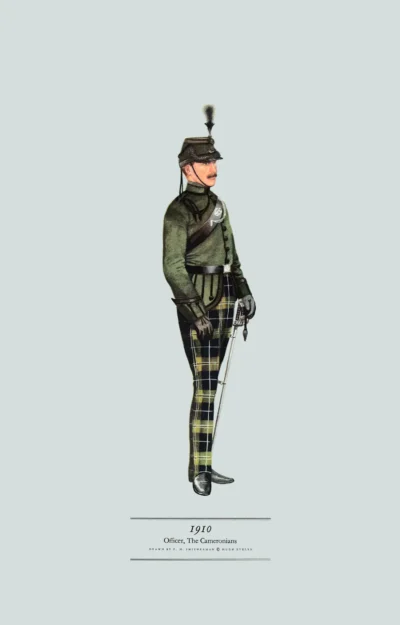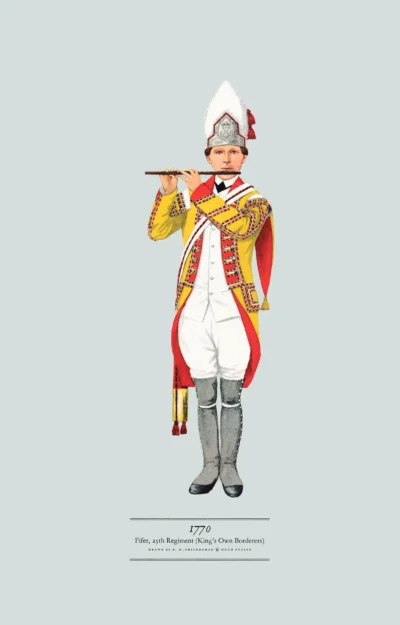Fifer, 25th Regiment (King’s Own Borderers), 1770
£20.00
Raised 1689; from 1887 The King’s Own Scottish Borderers; from 2006 Royal Regiment of Scotland – 1 SCOTS (scroll down for a more detailed Description)
Published 1963 by © Hugh Evelyn Limited; drawn by Colonel Philip Henry Smitherman (1910-1982), Royal Corps of Signals
Size: c. 24.5 x 37.5 cm [9 ½ ″ x 14 ½ ″] (may vary slightly from printers’ cut 50 years ago)
Printed on on medium cardstock weighing 144 g/sm2 faced in light greyish blue (RGB c. d5dede)
Print is STANDARD size – shipping is the same for 1 to 10 prints (based on largest print size in your order) – see Shipping & Returns.
In stock
Description
This regiment was raised in 1688 by the Earl of Leven for William of Orange to defend Edinburgh against James VII. Known for a time as Semphill’s Regiment of Foot, when the British infantry were allocated numerical positions in the ‘line’ of Infantry, the regiment was numbered 25th Regiment of Foot (based on its formation date) in 1751. It retained its connection with Edinburgh throughout [except for a period in 1781: a quarrel between town and regiment led to briefly renaming it the ‘Sussex Regiment‘]. The regiment was one of only five in the line infantry never to have been amalgamated before 2004. The King’s Own Scottish Borderers [KOSB] amalgamated with Royal Scots on 1 August 2006 taking the name Royal Scots Borderers, 1st Battalion Royal Regiment of Scotland or 1 SCOTS. The 25th, a Lowland regiment, never wore Highland dress. In 1881 it was granted tartan trews. Drummers and fifers dressed in coats of the facing colour with red collars and cuffs making them conspicuous in action so was given up in the Napoleonic wars. Fifers were boys selected as likely to make good N.C.O.s. The Fife Major was responsible for them as a person of consequence in the regiment. Many of the boys were the sons of soldiers. Having been brought up in the regiment, they regarded it as home. Drums and fifes were separate from the band. Musicians were hard to find and could be temperamental but the drums and fifes were a part of the regiment, whom they played into action. There are many stories of the bravery of such boys playing on in the thick of battle regardless of the danger.
Additional information
| Dimensions | 24 × 37.5 cm |
|---|





